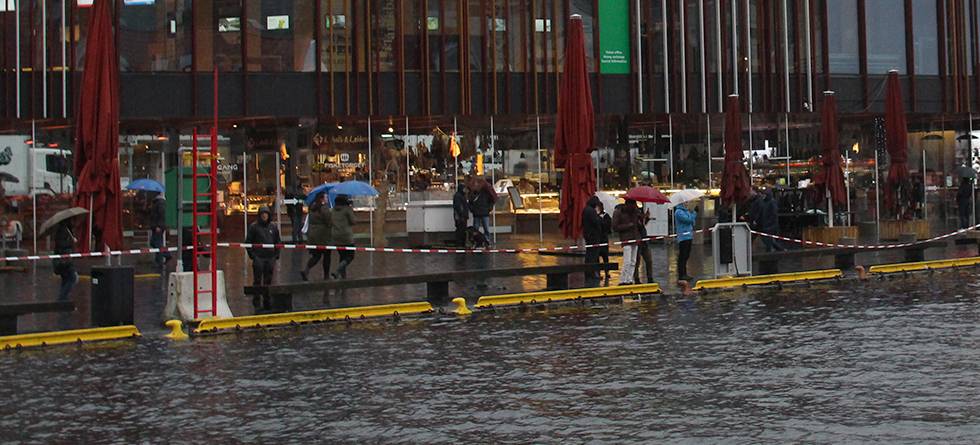“If the coast is rocky, the sea can rise a meter and it does not matter,” says Kristin Richter.
The researcher from NORCE and the Bjerknes Centre for Climate Research takes part in the Bjerknes Centre’s new project on sea level rise.
If all continents were surrounded by high cliffs, centimeters would be a unit without meaning. In the real world, every millimeter of sea level rise will make a difference somewhere.
The aim of the new project is to produce a clearer picture and more detailed scenarios of future sea levels at the coast of Northern Europe and in the Arctic.
Precise projections of future sea levels demand knowledge of more than the ocean. Land must also be considered.
Sea level is more than the ocean
Since the beginning of the 1990s the global sea level has risen more than three centimeters per decade. Meltwater from glaciers have added water, but part of the increase is due to heating. Warmer water takes up more space.
When deep ocean water is heated, the surface of the ocean is elevated, and water flows towards the continents. But exactly how the changes in the deep ocean propagate towards land, is still unknown.
“The water might rise higher when reaching the continental shelves,” says Antonio Bonaduce, researcher at the Nansen Environmental and Remote Sensing Center and the Bjerknes Centre. “This is not yet well explained.”
Coastal currents and bathymetry steer the water as it approaches the coast. Combined, such effects can turn out differently in different places. The consequences may also vary in time.

Changing coasts
The sea does not rise evenly along the world’s coasts. When glaciers melt on Greenland, more meltwater ends up in tropical oceans than in the north. This is because the ice loss makes Greenland smaller and lighter, weakening its gravitational pull. The fact that water expands most where it is heated the most, also creates differences. Climate models incorporate such effects.
But the coast itself has so far not been taken into consideration. In the new project, the researchers will include both water and land.
Climate models with a more detailed representation of the sea floor and the coastal landscape, are among the tools that will be used for more precise sea level projections. In addition, geologists will analyze the ground where water hits land.
“The shoreline can also change,” says Antonio Bonaduce.
Land rises or sinks. Sediments are washed out. A winter storm can rip away a beach. The coast is continuously changing, and how far inland the sea will reach, depends both on how much the sea rises and on changes onshore.
“If the land is flat, five centimeters more or less should concern us,” says Kristin Richter.

